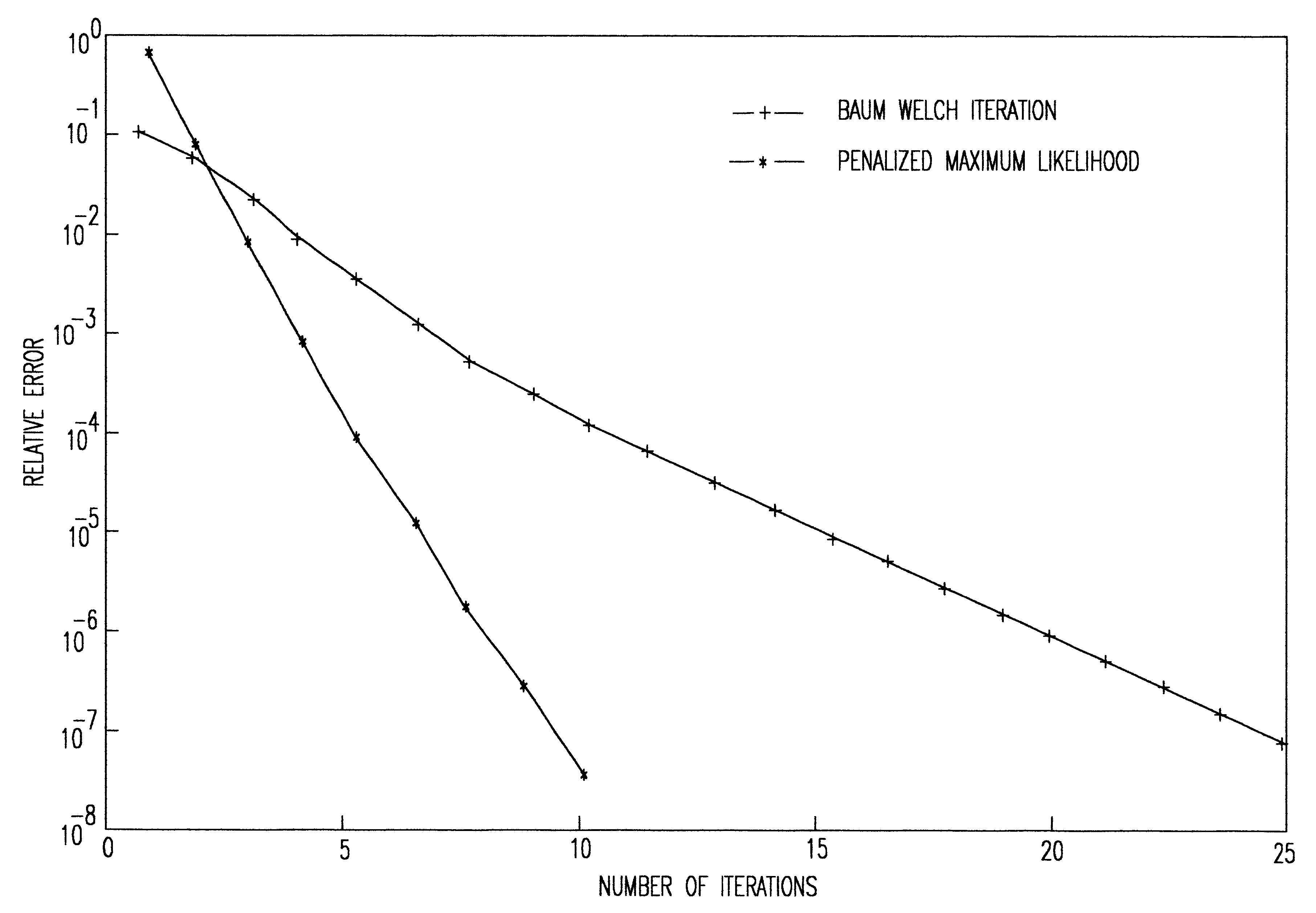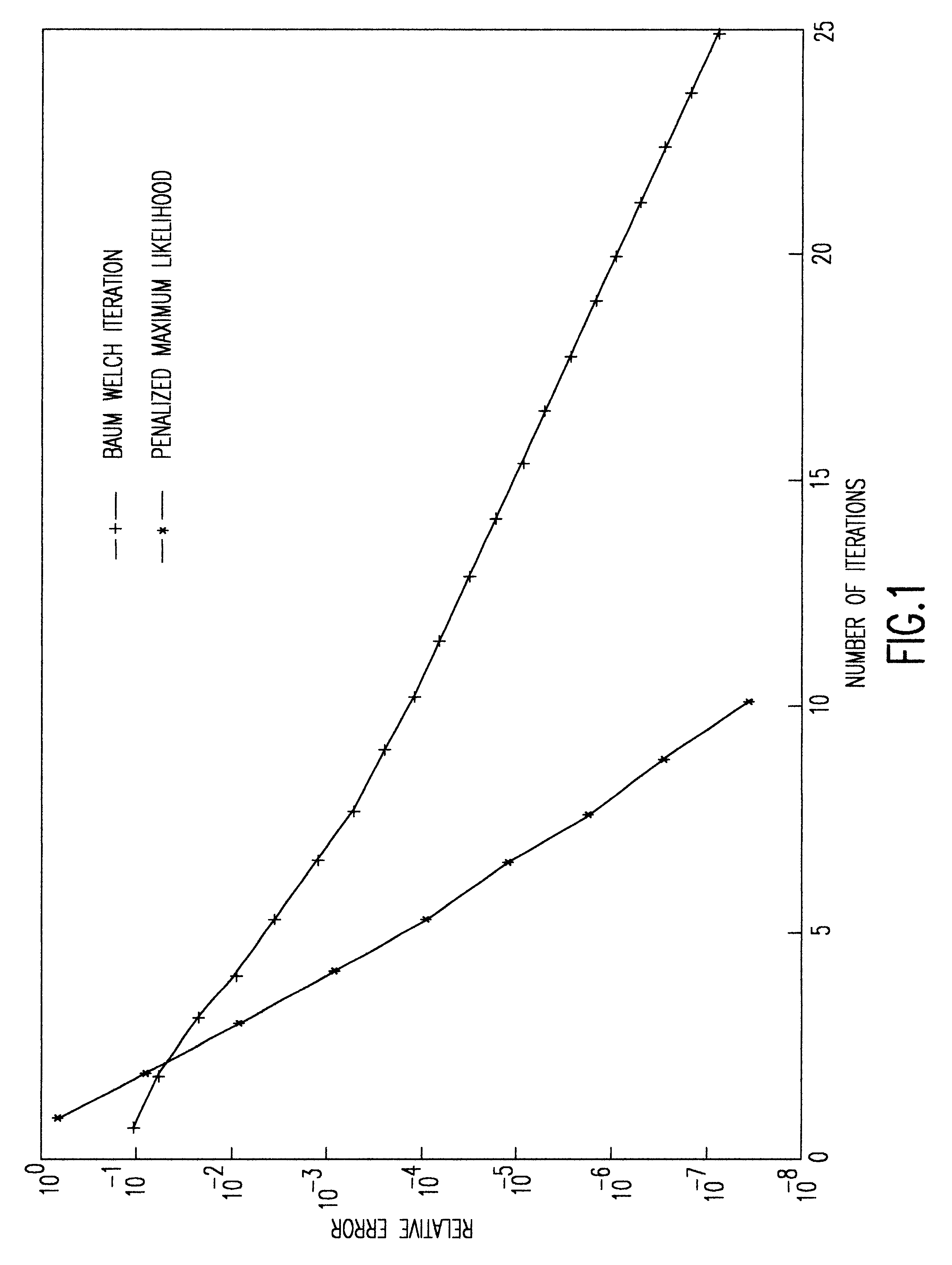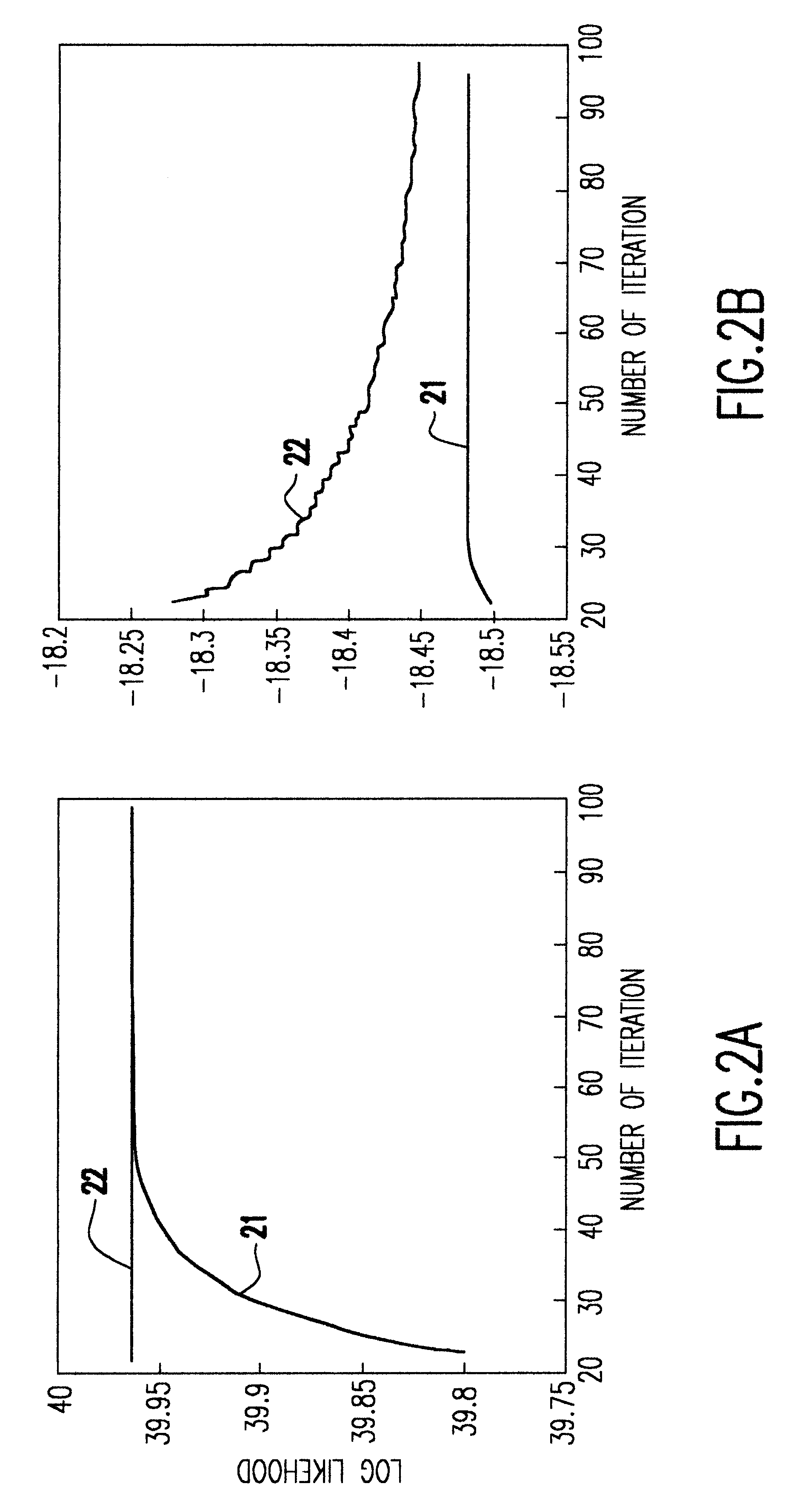Penalized maximum likelihood estimation methods, the baum welch algorithm and diagonal balancing of symmetric matrices for the training of acoustic models in speech recognition
- Summary
- Abstract
- Description
- Claims
- Application Information
AI Technical Summary
Problems solved by technology
Method used
Image
Examples
Embodiment Construction
Penalized Maximum Likelihood Estimation
Let x.sup.1, . . . ,x.sup.n be independent observations in R.sup.d from some unknown random variable with probability density function (PDF).function.. The likelihood function of the data ##EQU4##
is used to assess the value of a specific choice for .function.. In a parametric statistical context a functional form of .function. is assumed. Thus, we suppose that .function.=.function.(.cndot., a) where a is an unknown parameter vector that determines .function.. For example, .function. may be a mixture model of gaussian PDFs with unknown means, covariances and mixture weights. The parametric Maximum Likelihood Estimator (MLE) point of view tries to maximize the likelihood function over a. Such a data dependent choice of a is then used to specify the density .function.. If no information on .function. is known (or assumed) then it is clear that the likelihood function can be made arbitrarily large with a PDF that is concentrated solely at the data ...
PUM
 Login to View More
Login to View More Abstract
Description
Claims
Application Information
 Login to View More
Login to View More - R&D
- Intellectual Property
- Life Sciences
- Materials
- Tech Scout
- Unparalleled Data Quality
- Higher Quality Content
- 60% Fewer Hallucinations
Browse by: Latest US Patents, China's latest patents, Technical Efficacy Thesaurus, Application Domain, Technology Topic, Popular Technical Reports.
© 2025 PatSnap. All rights reserved.Legal|Privacy policy|Modern Slavery Act Transparency Statement|Sitemap|About US| Contact US: help@patsnap.com



